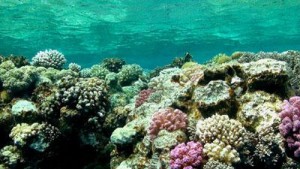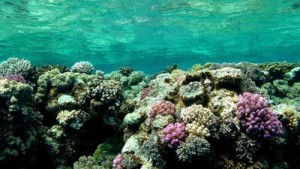Photo / Video News & Reviews
A Guide to Underwater Wildlife Video & Editing: Part 7
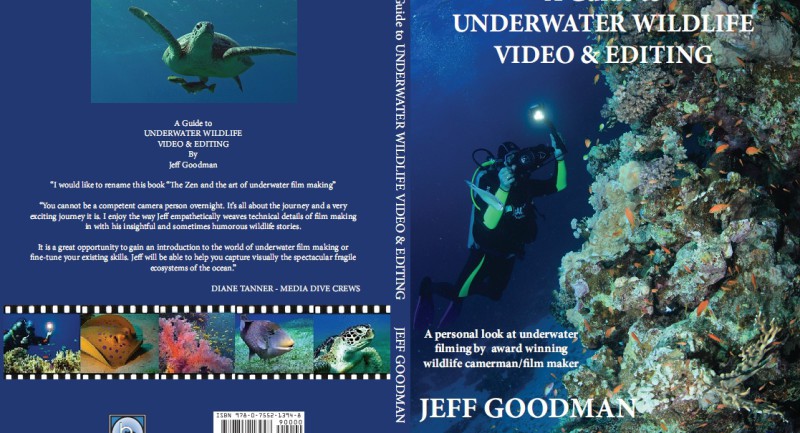
Read Part 6 here.
A part serialisation of a book by Jeff Goodman
PART 7: Flat & Dome Ports
Having paid good money for your camera and housing, it would be a shame to now spoil your image quality with a cheap port.
The optical properties of your port are as important as the lens of your camera. A low quality port would be like putting the wrong pair of spectacles on a person, so although they could still see well enough, the images would be slightly soft or degraded.
Once again you usually get what you pay for. Often the problem of choosing your first port is solved for you by the housing manufacturer in that a particular housing and supplied port will be specially designed for optimum results with a particular camera and lens. It is always worth grilling the sales person that this is the case for the set-up you are interested in (In the semi-professional range of cameras and above, you can of course change camera lenses. It then becomes very important to use a compatible port).
No single port will cover all the types of filming you may like to do.
There are 3 main port types:
- The flat port which is mainly useful for macro work and good close ups.
- The standard dome port which covers most applications.
- The wide angle dome port for videoing ultra wide angle.
The flat or macro ports are great for filming close ups and macro but because of the refractive index effect as previously mentioned, this port will decrease the natural angle of coverage of the lens and so increase the apparent image size. These ports would not be the best for videoing large subjects such as whales or wrecks, especially if the water visibility is minimal and you have to get really close to see anything at all.
The standard dome port is a good option for covering a wide range of subjects and is probably the most widely used. These standard dome ports will compensate for the 1/3rd angle of coverage loss and restore your lens to normal coverage.
The wide angle port provides the maximum angle of coverage when used with a wide angle lens and is good for getting close to the subject but maintaining a wide perspective. These are particularly useful in temperate waters where the visibility may generally not be so clear. Many manufacturers of underwater housings put in a standard port by default. More expensive housings will allow you to change ports which in effect is the same as changing lenses. Another option for some housings is to use a ‘wet’ wide angle adaptor which can be added to, or taken away from the flat port while still underwater. These ‘wet’ ports are very versatile but there is a small drop in quality when compared to a prime wide angle port.
Fisheye lens & port
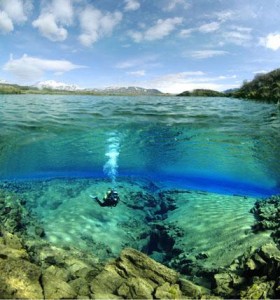 A fisheye lens and port give an even greater angle of coverage, but does so with a high degree of distortion. This will vary in degree from lens to lens. The effects can be quite dramatic and are usually better used with stills photography than video.
A fisheye lens and port give an even greater angle of coverage, but does so with a high degree of distortion. This will vary in degree from lens to lens. The effects can be quite dramatic and are usually better used with stills photography than video.
Zooming through a dome port
Not all dome ports, especially the cheaper ones, will facilitate a zoom and at the same time, keep focus. Auto focus can sometimes compensate for this but it is not guaranteed. And remember, if you do zoom in, then the depth of field will decrease. Generally zooming while actually filming can be very off-putting for an audience and so unless there is a very good reason for doing this then I would suggest you mainly use the function for re-sizing and framing your shot.
Scratched Ports
 A scratch or mark on your port can be a real pain. Scratches are more noticeable on glass ports than on Perspex ones. This is because Perspex or acrylic is roughly the same refractive index as sea water and so scratches are effectively filled by the water and visually removed. But with glass the refractive index is different and as light passes through a scratch it behaves differently from the rest of the port glass and becomes noticeable. Under normal front, side or top-lit situations, a scratch may not be noticed but may very quickly become apparent when back-lit. With glass I’m afraid it is time to change your port. With Perspex there is the opportunity to buff the port with ‘wet & dry’ to remove light scratches. This will take hours of patient work.
A scratch or mark on your port can be a real pain. Scratches are more noticeable on glass ports than on Perspex ones. This is because Perspex or acrylic is roughly the same refractive index as sea water and so scratches are effectively filled by the water and visually removed. But with glass the refractive index is different and as light passes through a scratch it behaves differently from the rest of the port glass and becomes noticeable. Under normal front, side or top-lit situations, a scratch may not be noticed but may very quickly become apparent when back-lit. With glass I’m afraid it is time to change your port. With Perspex there is the opportunity to buff the port with ‘wet & dry’ to remove light scratches. This will take hours of patient work.
In short, take care of your ports. Glass is tougher than Perspex but is far more expensive. Your choice. If you can afford it, go for glass.
Condensation
Condensation and fogging in a housing can lead to missed shots and great frustration and, of course, it doesn’t become noticeable until you are underwater. The problem can occur when there is a slight amount of moisture in your housing and then that housing is put in the heat of direct sunlight. The moist air in the housing, upon being put into relatively cold water, will immediately condense on the thinnest and coldest part of that housing, which is going to be at the centre of the dome port. It rarely happens with a flat port but it is not impossible. So, you jump in the water hoping for a great video session and all you get is foggy day shots. You can see the condensation right away, but just occasionally, if you are not paying attention and the amount of moisture is very slight, the effect will be to soften the focus of your image. You may think all this is obvious but be vigilant.
The solution is to make sure your camera and housing interior are thoroughly dry and you do not leave your rig out in the hot and direct sun at any time, especially while you are kitting up. Keep the housing shaded until you get in the water.
Next time we look at Colour Bars and Monitors.
Blogs
Diver Discovering Whale Skeletons Beneath Ice Judged World’s Best Underwater Photograph
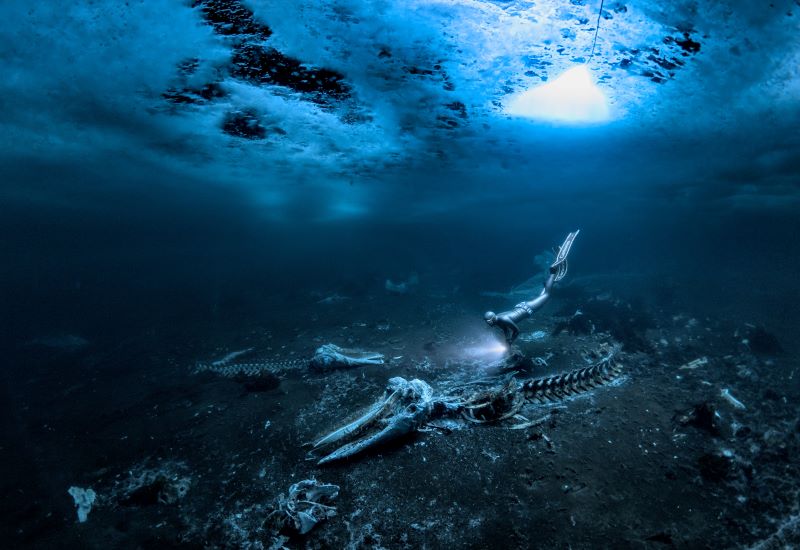
An emotive photograph showing a freediver examining the aftermath of whaling sees
Alex Dawson from Sweden named Underwater Photographer of the Year 2024. Dawson’s
photograph ‘Whale Bones’ triumphed over 6500 underwater pictures entered by underwater
photographers from around the world.
“Whale Bones was photographed in the toughest conditions,” explains chair of judging
panel Alex Mustard, “as a breath-hold diver descends below the Greenland ice sheet to bear
witness to the carcasses. The composition invites us to consider our impact on the great
creatures of this planet. Since the rise of humans, wild animals have declined by 85%. Today,
just 4% of mammals are wildlife, the remaining 96% are humans and our livestock. Our way
needs to change to find a balance with nature.”
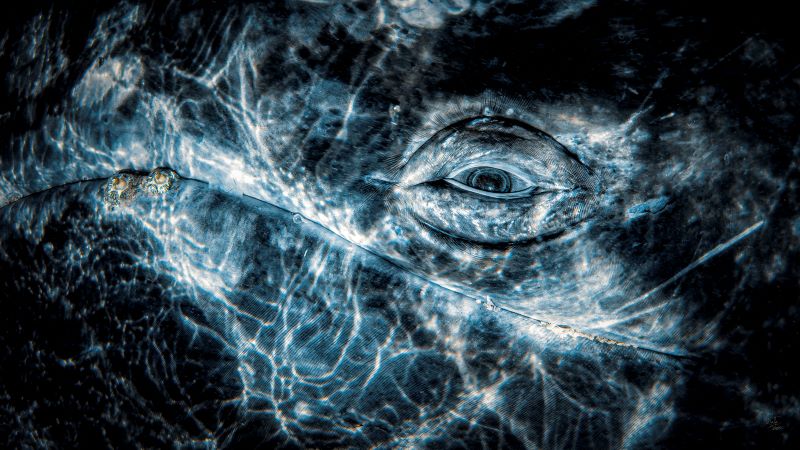
Photo: Rafael
Fernandez Caballero
Whales dominated the winning pictures this year with Spanish photographer Rafael
Fernandez Caballero winning two categories with his revealing photos of these ocean giants:
a close up of a grey whale’s eye and an action shot of a Bryde’s whale engulfing an entire bait
ball, both taken in Magdalena Bay, Baja California, Mexico. Fernandez Caballero took ‘Grey
Whale Connection’ while drifting in a small boat, holding his camera over the side in the water
to photograph the curious whale. ‘The End Of A Baitball’ required Fernandez Caballero to dive
down and be in exactly the right place at the moment the whale lunged. “The photo shows
the high speed attack,” he said, “with the whale engulfing hundreds of kilograms of sardines
in one bite — simply unforgettable to see predation on such a scale.”
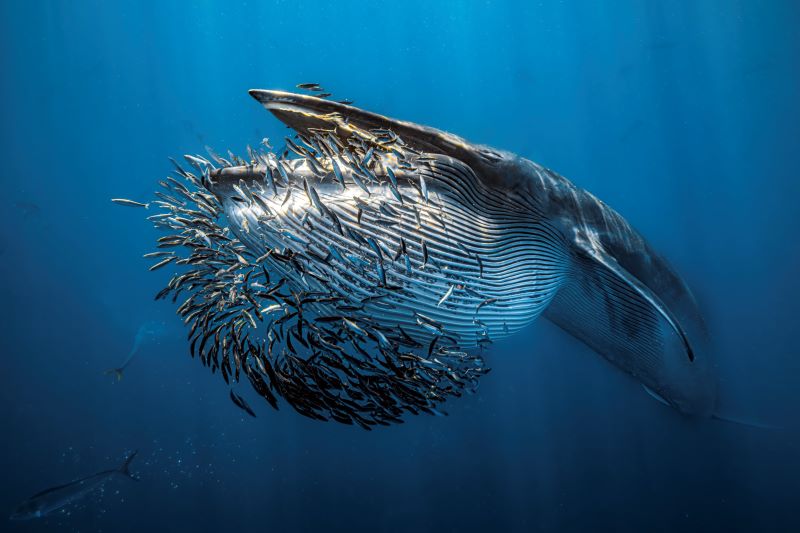
Photo: Rafael
Fernandez Caballero
Lisa Stengel from the United States was named Up & Coming Underwater Photographer of the Year 2024 for her image of a mahi-mahi catching a sardine, in Mexico. Stengel used both a very fast shutter speed and her hearing to catch the moment. “If you listen there’s an enormous amount of sound in the ocean,” she explained. “The action was too fast to see, so I honed in on the sound of the attacks with my camera to capture this special moment.”
“It is such an exciting time in underwater photography because photographers are capturing such amazing new images, by visiting new locations and using the latest cameras,”
commented judge Alex Mustard. “Until this year I’d hardly ever see a photo of a mahi mahi,
now Lisa has photographed one hunting, action that plays out in the blink of an eye.”
The Underwater Photographer of the Year contest is based in the UK, and Jenny Stock,
was named as British Underwater Photographer of the Year 2024 for her image “Star
Attraction”, which finds beauty in species of British wildlife that are often overlooked.
Exploring the west coast of Scotland, Stock explained “in the dark green depths my torch
picked out the vivid colours of a living carpet of thousands of brittle stars, each with a
different pattern. I was happily snapping away, when I spotted this purple sea urchin and I
got really excited.”
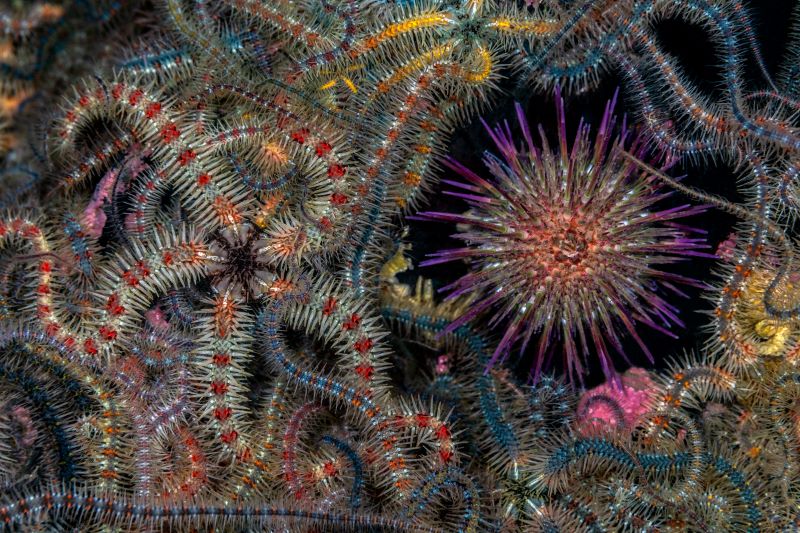
Photo: Jenny Stock
In the same contest, Portuguese photographer, Nuno Sá, was named ‘Save Our Seas
Foundation’ Marine Conservation Photographer of the Year 2024, with his photo ‘Saving
Goliath’, taken in Portugal. Sá’s photo shows beachgoers trying to save a stranded sperm
whale. The picture gives us hope that people do care and want to help the oceans, but also
warns us that bigger changes are needed. “The whale had been struck by a ship and its fate
was sealed,” explains Sá. “An estimated 20,000 whales are killed every year, and many more
injured, after being struck by ships-and few people even realise that it happens.”
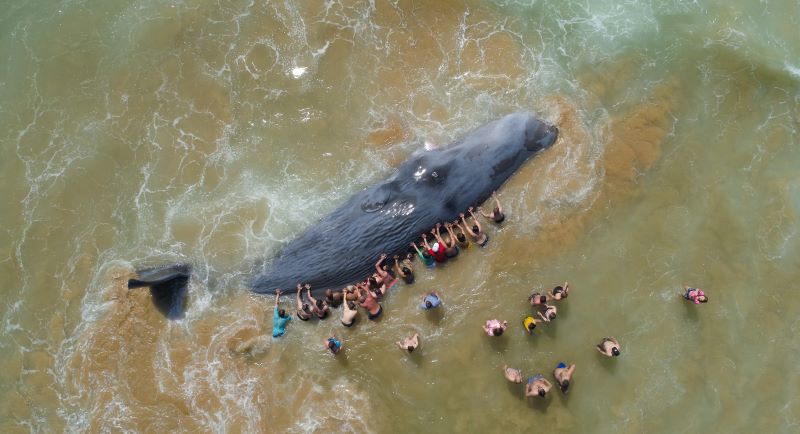
Photo: Nuno Sá
More winning images can be found at www.underwaterphotographeroftheyear.com.
About Underwater Photographer of the Year
Underwater Photographer of the Year is an annual competition, based in the UK, that celebrates photography beneath the surface of the ocean, lakes, rivers and even swimming pools, and attracts entries from all around the world. The contest has 13 categories, testing photographers with themes such as Macro, Wide Angle, Behaviour and Wreck photography, as well as four categories for photos taken specifically in British waters. The winners were announced in an award ceremony in Mayfair, London, hosted by The Crown Estate. This year’s UPY judges were experienced underwater photographers Peter Rowlands, Tobias Friedrich and Dr Alexander Mustard MBE.
Header image: Underwater Photographer of the Year 2024 winner Alex Dawson
News
World’s Best Underwater Photographers Unveil Breathtaking Images at World Shootout 2023
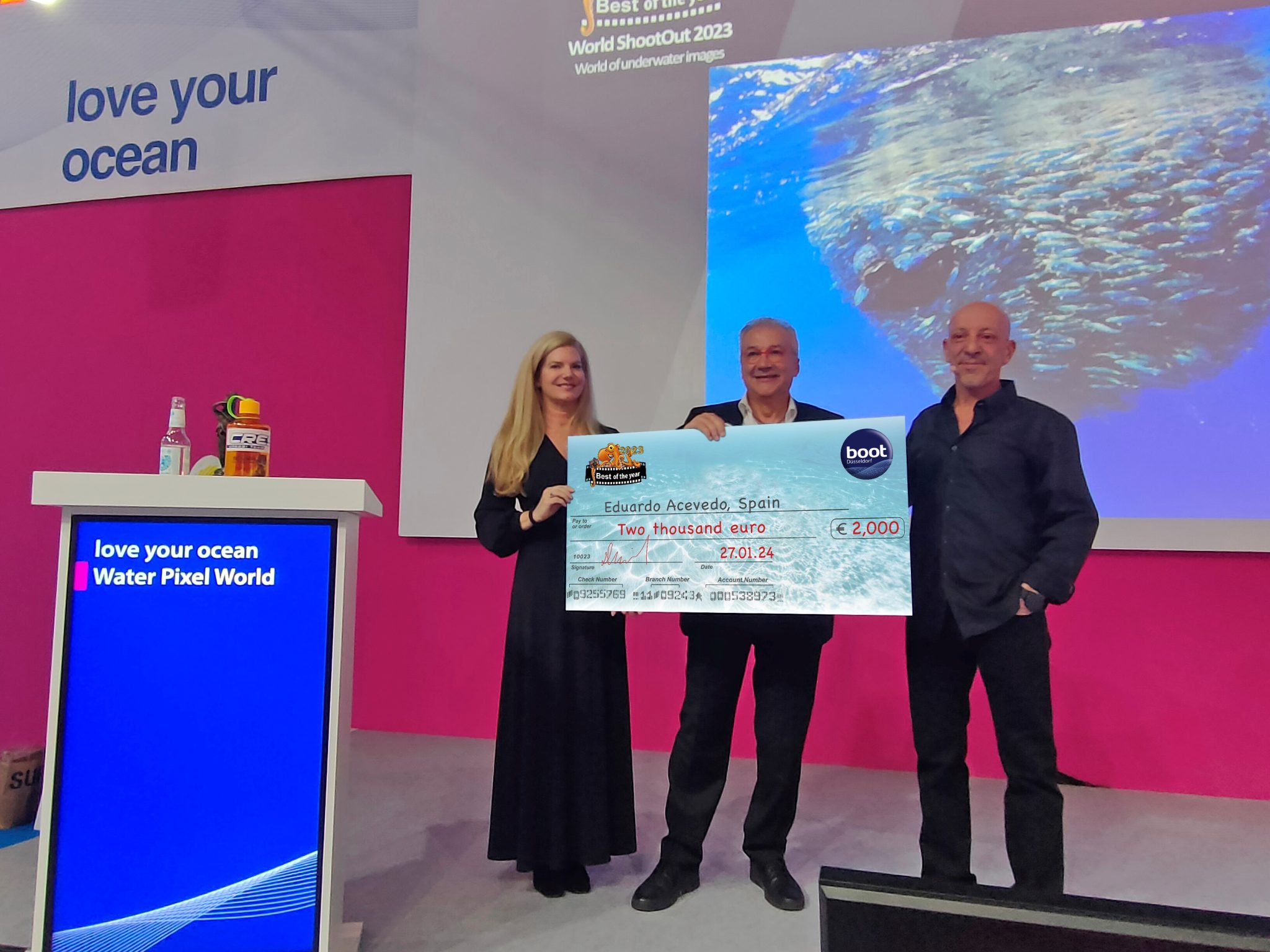
The winners of the prestigious World Shootout 2023 underwater photography competition were announced at this year’s BOOT Show, captivating audiences at the world’s largest diving and water sports exhibition in Dusseldorf, Germany. Hundreds of photographers from 54 countries competed across nine categories, pushing the boundaries of creativity and technical skill.
Grand Prize Winners
- Picture of the Year: Spanish photographer Eduardo Acevedo “secured” the top Honor with the prestigious prize the “boot Dusseldorf Director’s Prize, earning an Andromeda statuette and a €2,000 cash prize.
- Best 5 Images Portfolio: Luc Rooman from Belgium triumphed in this category, winning a dream 4-week diving trip for two to Papua New Guinea, valued at $18,900.
- Amateur Photographer: Alexandra Ceurvorst from the USA impressed the judges with her talent, taking home the 1,000 € cash prize award.
Celebrating Diversity and Innovation
This year’s competition saw 11,680 entries from 964 photographers, showcasing a remarkable spectrum of skills and perspectives. From the intricate wonders of Macro photography to the beauty of “Black Water”, the “Underwater Fashion” category added a touch of artistry and innovation, while the ever-important ” Environmental & Conservation” category served as a powerful reminder of the need to protect these fragile ecosystems.
Looking Ahead: AI and Ocean Conservation
World Shootout founder and producer David Pilosof unveiled an exciting addition for the 2024 competition: this year the Environmental category will be focusing on the impact of plastic on our oceans and future.
This category will embrace the potential of AI or other editing software as a tool to amplify the conservation message.
Entrants will submit campaigns of three original underwater photographs dealing with plastic pollution, along with their final AI assistance processing. This innovative approach encourages artistic expression while raising awareness about a critical environmental issue.
Explore the Stunning Collection
Discover the complete album of competition entries by clicking here.
For Low-resolution photos of finalist entries in eight categories, click here.
-

 News3 months ago
News3 months agoHone your underwater photography skills with Alphamarine Photography at Red Sea Diving Safari in March
-

 News3 months ago
News3 months agoCapturing Critters in Lembeh Underwater Photography Workshop 2024: Event Roundup
-

 Marine Life & Conservation Blogs2 months ago
Marine Life & Conservation Blogs2 months agoCreature Feature: Swell Sharks
-

 Blogs2 months ago
Blogs2 months agoMurex Resorts: Passport to Paradise!
-

 Blogs2 months ago
Blogs2 months agoDiver Discovering Whale Skeletons Beneath Ice Judged World’s Best Underwater Photograph
-

 Gear Reviews3 months ago
Gear Reviews3 months agoGear Review: Oceanic+ Dive Housing for iPhone
-

 Marine Life & Conservation2 months ago
Marine Life & Conservation2 months agoSave the Manatee Club launches brand new webcams at Silver Springs State Park, Florida
-

 News3 months ago
News3 months agoWorld’s Best Underwater Photographers Unveil Breathtaking Images at World Shootout 2023


